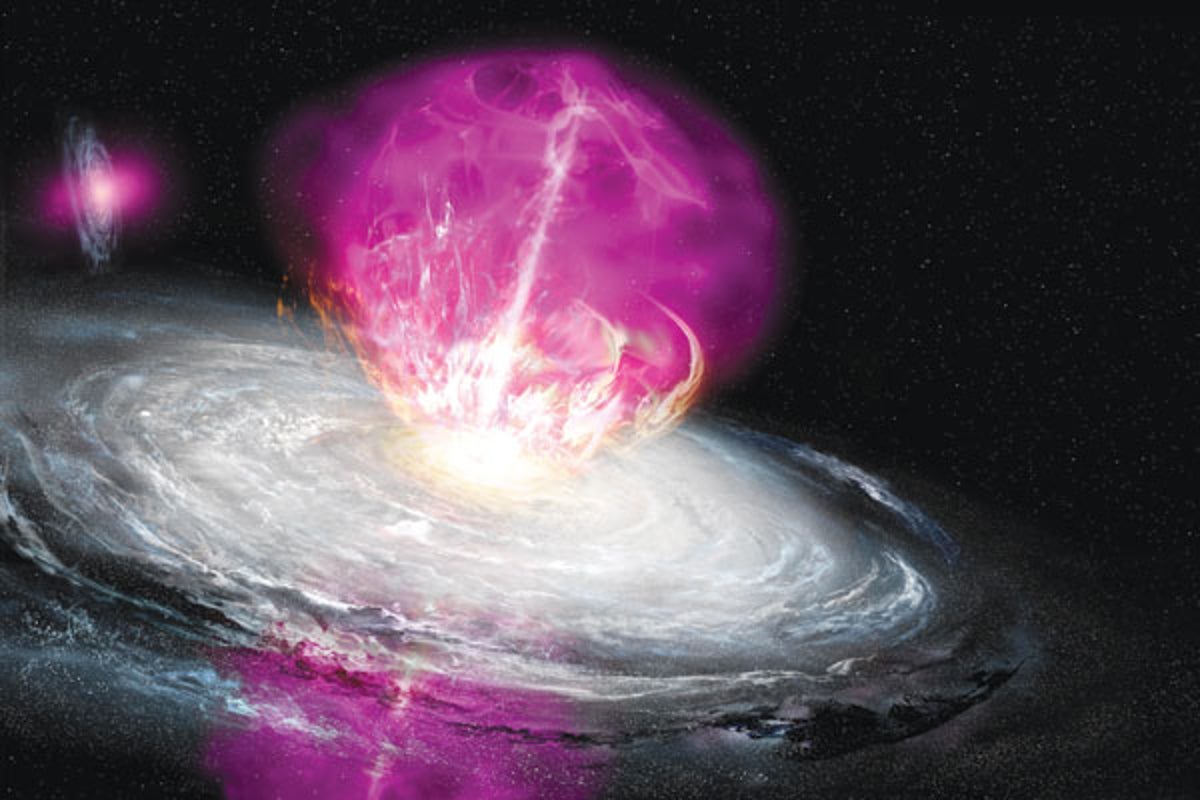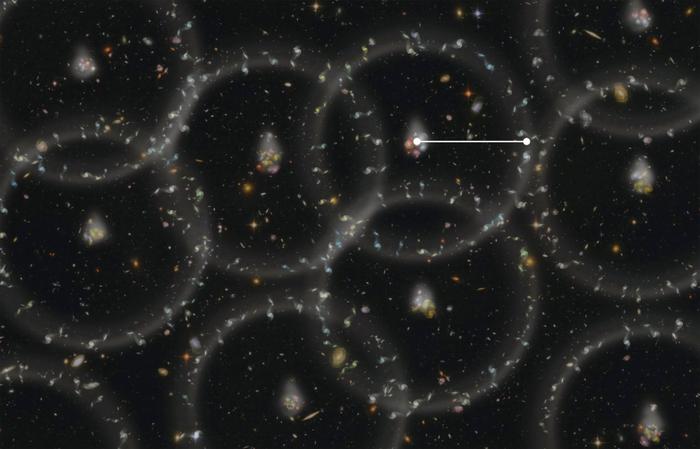Named Ho’oleilana, the newly-discovered ‘bubble’ of galaxies is around one billion light-years across and is centered 820 million light-years away from the Milky Way. The discovery has significant implications for how the expansion rate of the Universe is measured — a major point of contention amongst cosmologists.

An artist’s impression of Ho’oleilana. Image credit: Frédéric Durillon.
In the Big Bang theory, during the first 400,000 years, the Universe is a cauldron of hot plasma similar to the interior of the Sun. Within plasma, electrons were separated from the atomic nuclei.
During this period, regions with slightly higher density began to collapse under gravity, even as the intense bath of radiation attempted to push matter apart.

This struggle between gravity and radiation made the plasma oscillate or ripple and spread outward.
The largest ripples in the early Universe depended on the distance a sound wave could travel.
Set by the speed of sound in the plasma, this distance was almost 500 million light years, and was fixed once the Universe cooled and stopped being plasma, leaving vast three-dimensional ripples.
Throughout the eons, galaxies formed at the density peaks, in enormous bubble-like structures.
.jpg)
Patterns in the distribution of galaxies, properly discerned, could reveal the properties of these ancient messengers.
“This phenomenal bubble is a fossil from the time of the Big Bang 13 billion years ago, when the Universe was formed,” said University of Queensland astronomer Cullan Howlett.
“We weren’t even looking for it, but the structure is so huge it spilled to the edges of the sector of the sky we were analyzing.”
“It dwarfs many of the largest known structures such as the Sloan Great Wall and Boötes Supercluster, which actually form part of this bubble.”

“What makes it even more unbelievable is it’s right in our backyard.”
The Ho’oleilana bubble was discovered using data from the Cosmicflows-4 and Sloan Digital Sky surveys.
“Structures of this type are predicted by the Big Bang theory, as a pattern of wrinkles in the density distribution of the early Universe known as Baryon Acoustic Oscillations (BAO),” the astronomers said.

“BAO provide an independent way to measure the expansion rate of the Universe and how the rate has changed throughout cosmic history.”
“The bonus of this discovery is that it gives us a clearer picture of the expansion rate of the Universe,” Dr. Howlett said.
“Our analysis suggests because this bubble is larger than expected, the Universe has expanded further than originally predicted.”

“Discrepancies in measurements of the expansion rate of the Universe are probably the biggest issue in cosmology right now, and this adds more fuel to that conversation.”
“We’re now a step closer to a great change in the field of cosmology, where the whole model of the Universe might need re-evaluating.”